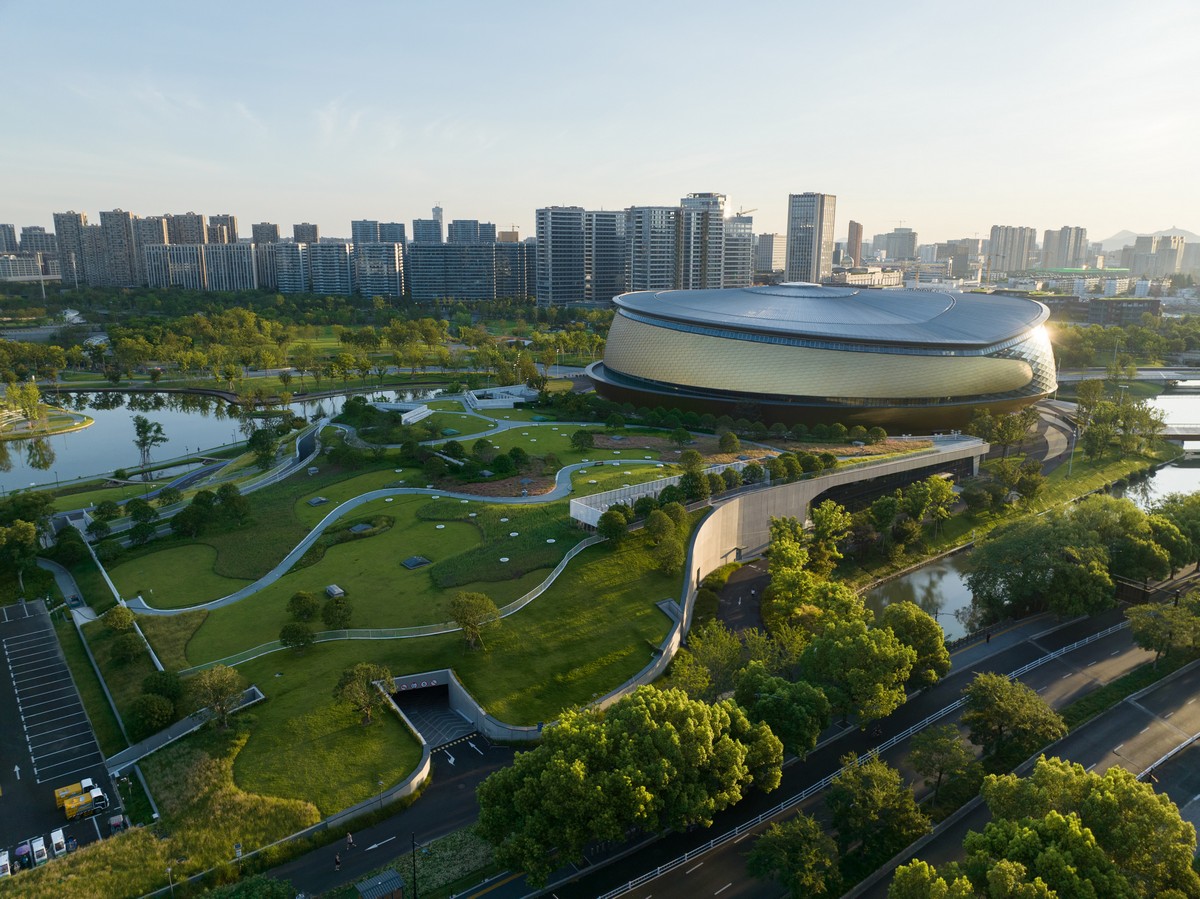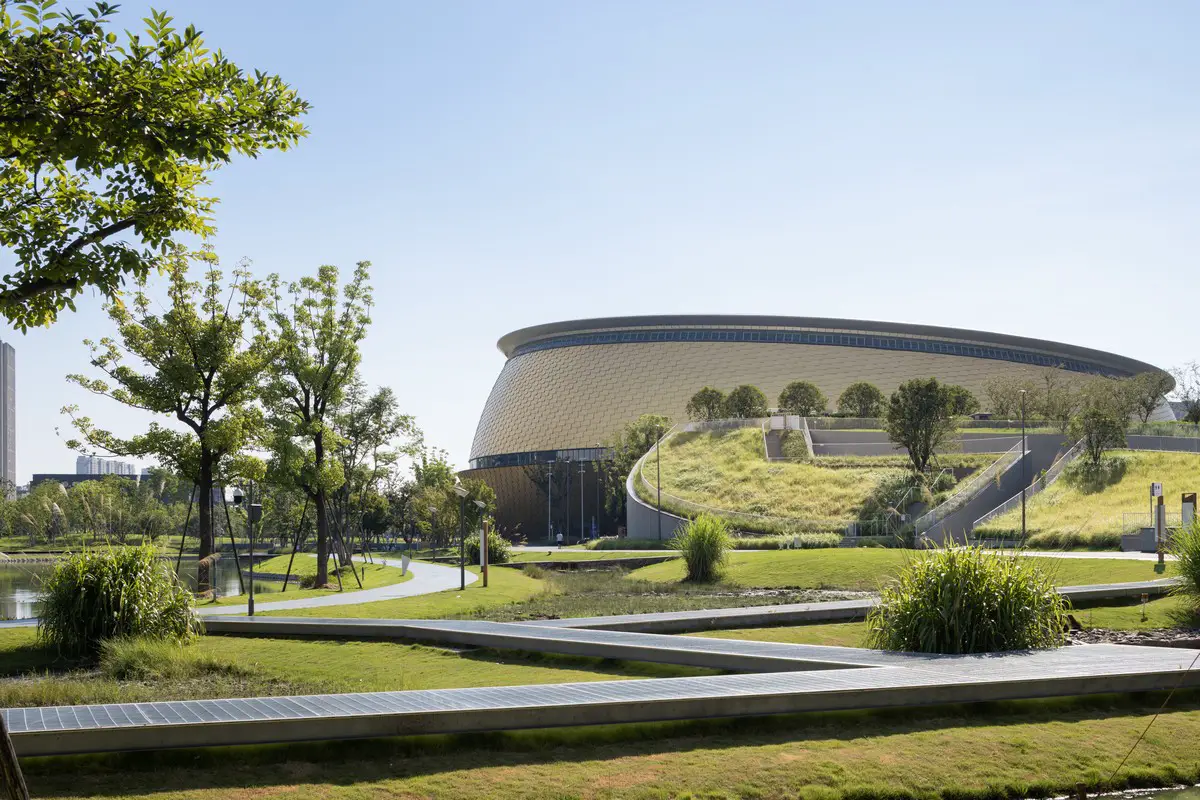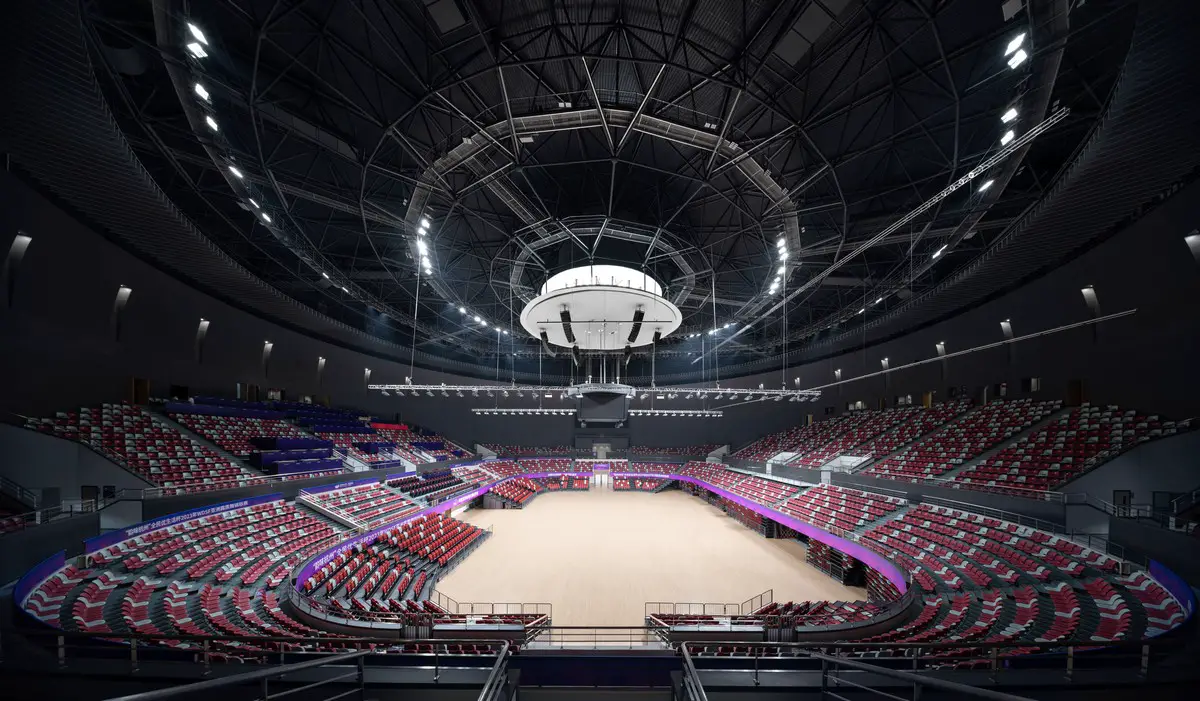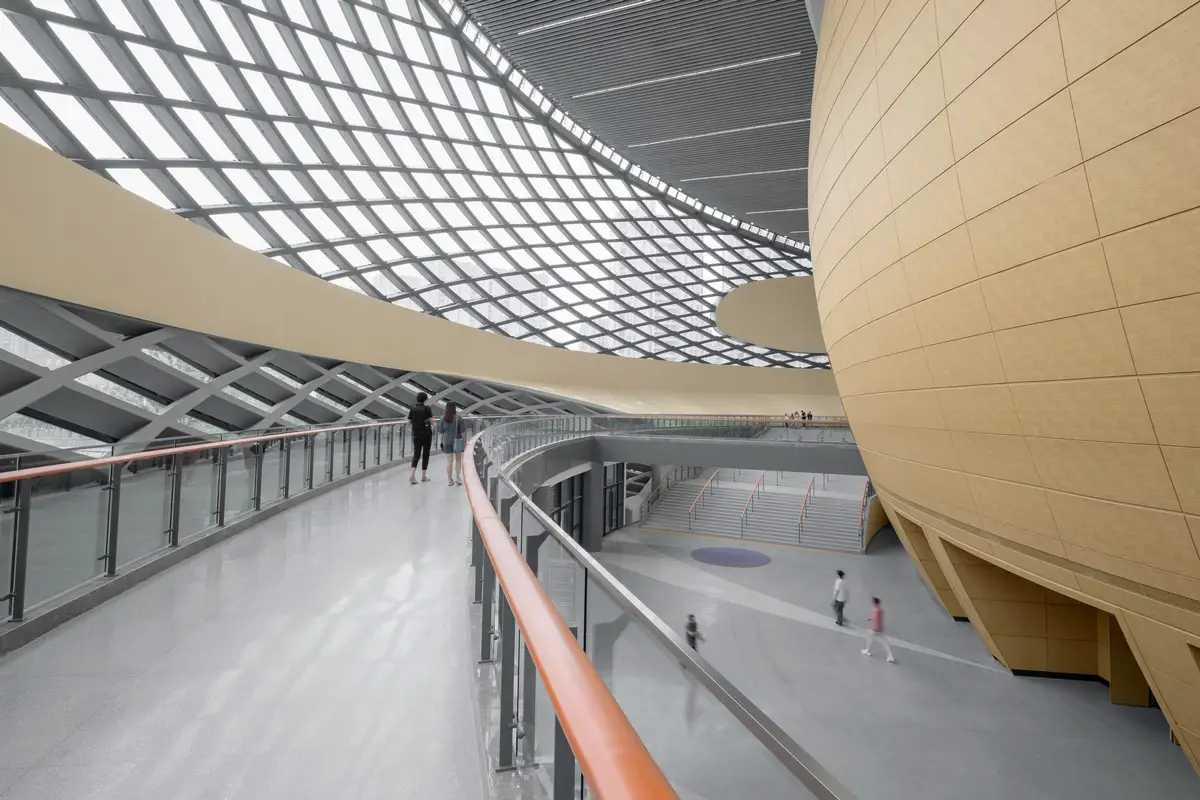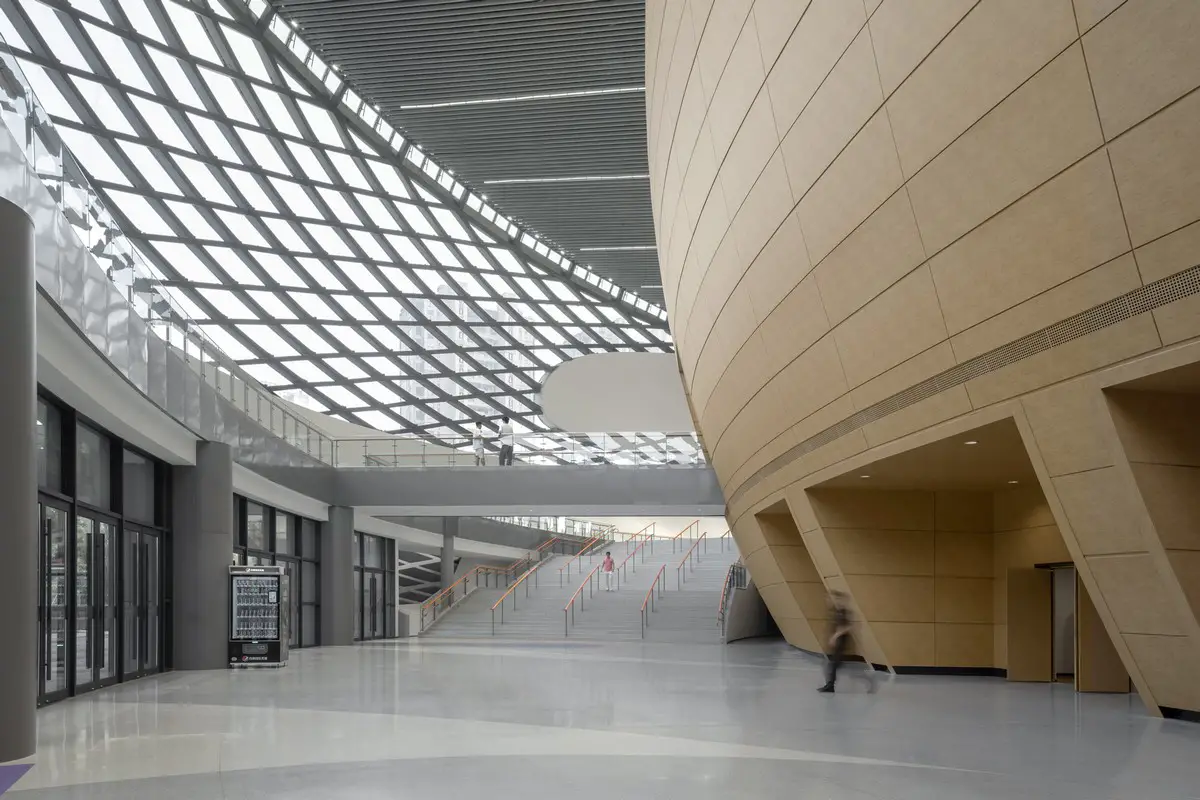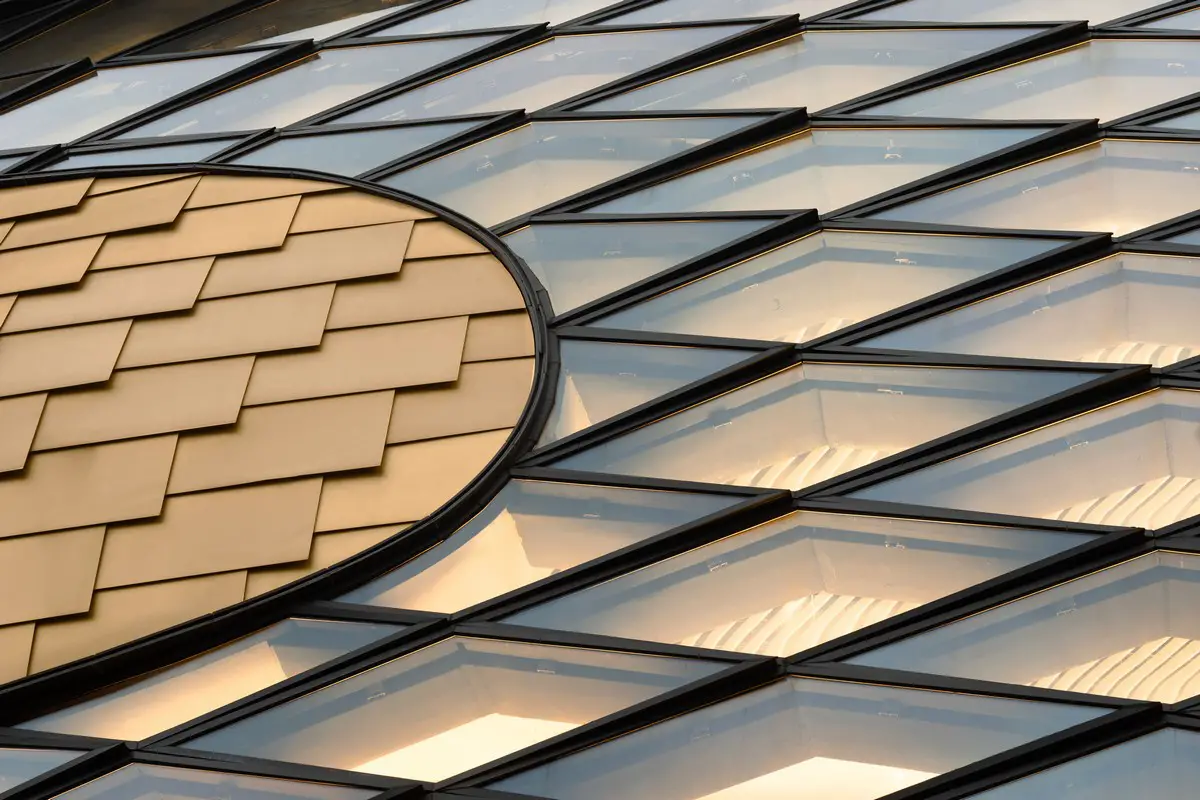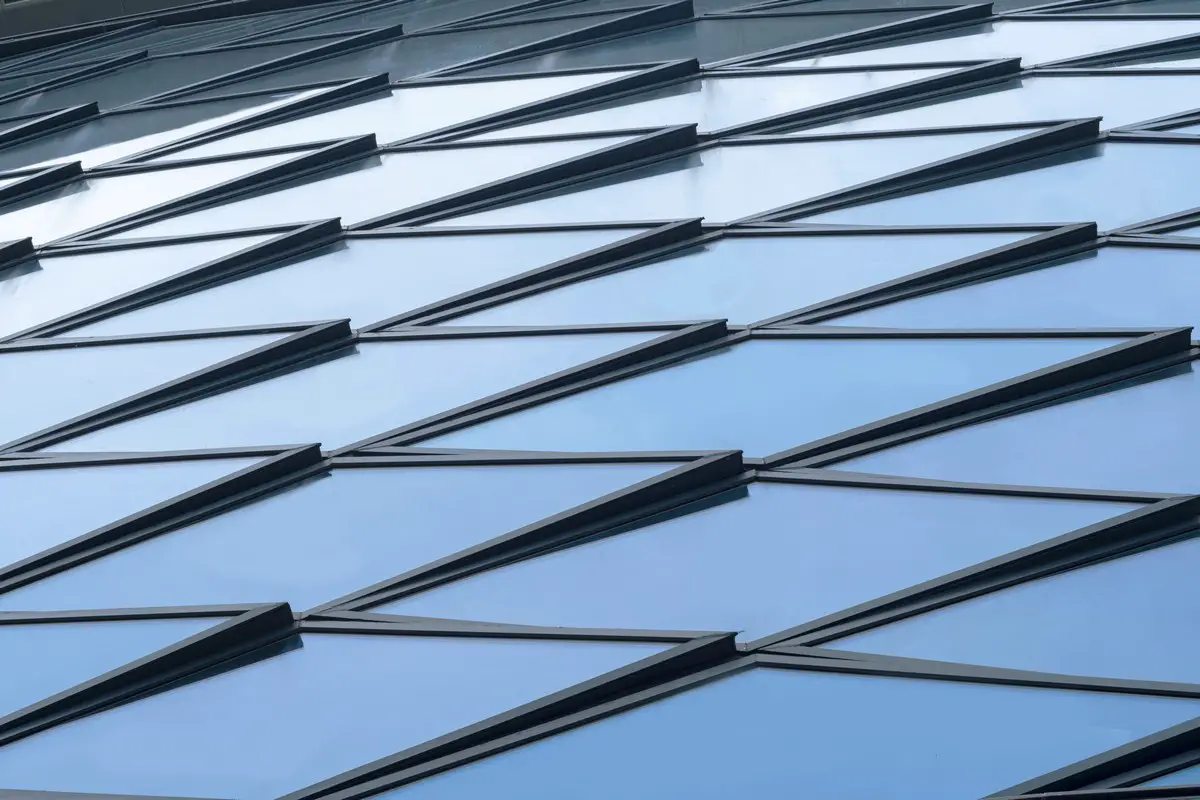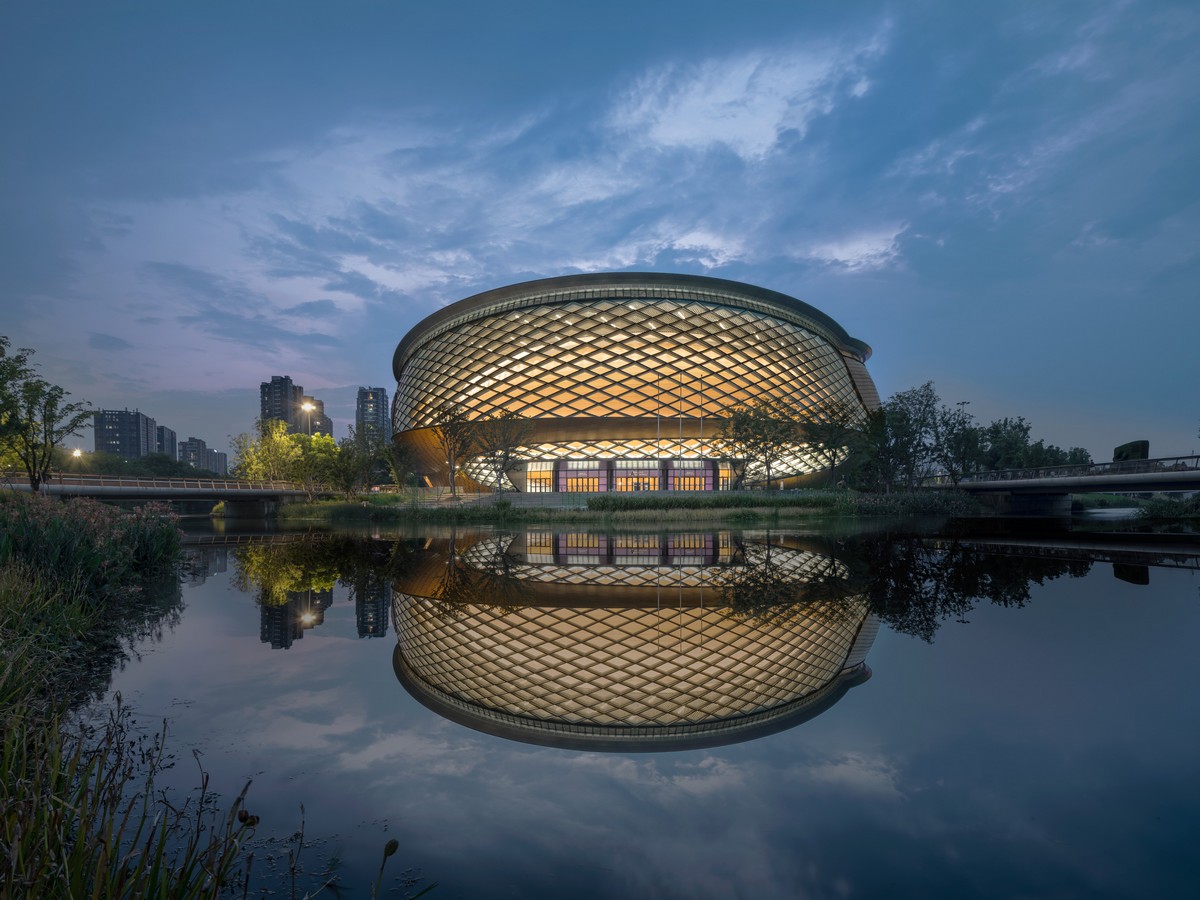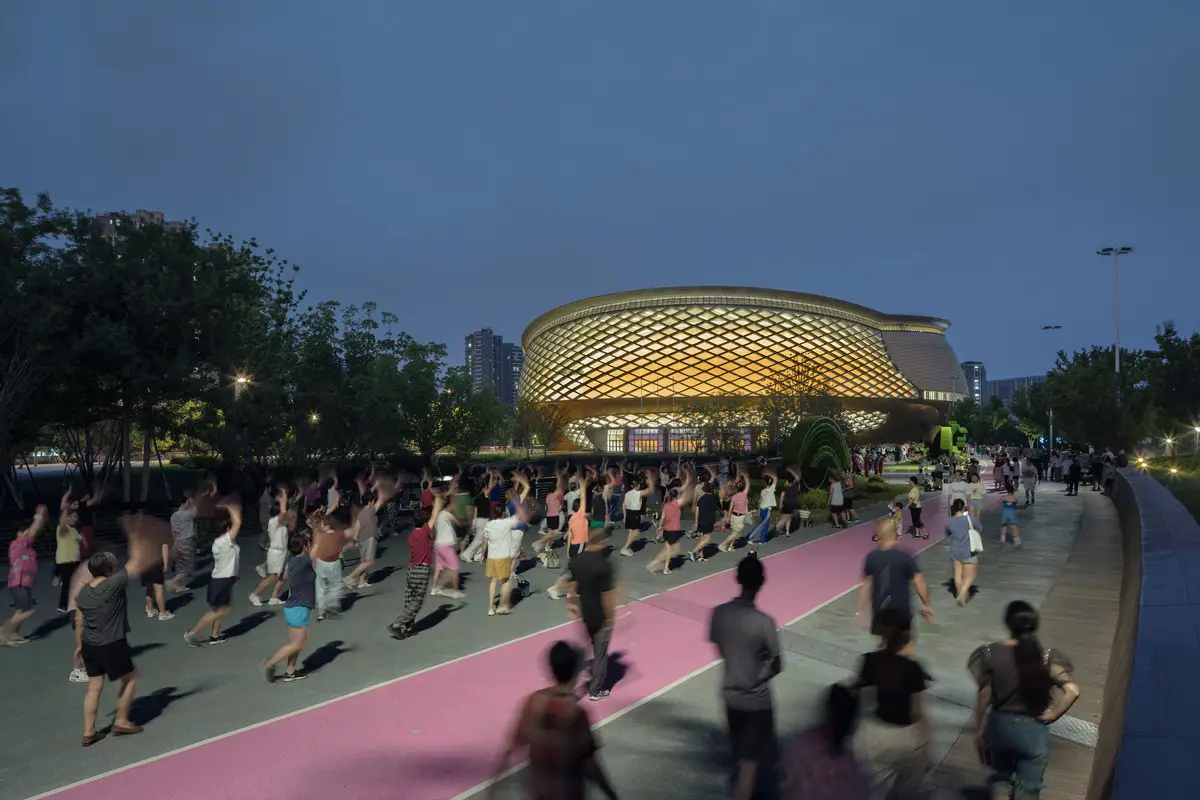Hybrid Stadium Hangzhou, China arena building development, Modern Chinese leisure architecture photos
Hybrid Stadium Hangzhou, China
16 Oct 2023
Architects: Archi-Tectonics NYC, LLC
Location: Hangzhou, China
Photos by SFAP
Hybrid Stadium building opens
Hybrid Stadium, China
The Hybrid Stadium is a 5,000-seat centerpiece for the Hangzhou Asian Games Park embodies the heritage of the region, adapting the geometry of the Cong—an ancient Jade-stone artifact in the shape of a square tube with a circular bore—to create a hybrid building, rather than a singular stadium, that maximizes legacy adaptability and embraces the spirit of its place. The stadium will be a destination for the Games themselves and the City of Hangzhou long after they end.
Archi-Tectonics’ parametric design study into the creation of a hybrid form, started with the study of the intersecting shape of the cong, and translated this into two intersecting ellipses that create overlapping spaces that open connections within the interiors and between the interior and exterior. The result is a highly adaptable set of volumes that can seamlessly convert to event space after the games.
‘We designed the Hybrid Stadium as both an icon for the games and an active participant in Hangzhou’s urban landscape that would generate new activities and uses once the games end,’ says Winka Dubbeldam, Founding Partner of Archi-Tectonics.
The hybrid will host the Table Tennis events during the Games and convert into a world-class performing arts center after the closing ceremony.
Hybrid Geometry: Wobbly discs
The Hybrid’s geometry was refined through multiple iterations and produced the distinctive asymmetric shape. The two intersecting ellipsoids are offset—one slides past the other, creating an oblong bowl that merges arena and amphitheater seating schemes. This makes it possible to adapt the central viewing layout preferred for sporting events into an asymmetric, stage-centered configuration for performances. The double curved inner bowl is entirely clad in bamboo with recessed lighting and a skylight above, blending technologically generated forms with vernacular materials that offer a warm and inviting environment.
‘Most stadiums are one-liners; circular buildings that enclose rectangular playing fields,’ says Dubbeldam. ‘The inner and outer rings are discrete. We found that there is no ideal adaptability in that model, and designed a hybrid model instead”.
As they slip past each other, the disc volumes create spatial anomalies that become signature moments. The more oblong section of the bowl hosts VIP seating lounges. The ramps that usher visitors to the seats create layers of horizontal and vertical interconnection, transitioning from the lively city to the calm, inward-looking space of the arena. Ramps fold up and around the bowl to get to the future theater lounge with an outdoor roof deck overlooking the recently restored wetlands and park landscape.
‘The ramps fold onto each other and have entrances all along the building perimeter,’ says Dubbeldam, ‘making a multi-valent space that organizes circulation in a fluid sweep.’
Secondary program areas like a sports treatment center, restaurants, VIP lounges, and retail areas are incorporated throughout the building, creating a layered and dynamic environment that—more than just a container for viewing sports or performances—serves as a fully-equipped events and entertainment destination. The resulting design celebrates the communal and dynamic nature of attending a cultural event, offering a multi-dimensional visitor experience.
‘Everything followed from the decision to design the building like a Cong,’ says Dubbeldam. ‘What was at first a provocative proposal to the client: to create a hybrid and to optimize the building for adaptability, ultimately became the driving logic of the design. From the intersecting volumes emerge the building’s uniquely sculptural appearance and spatial expression.’ It gets identity and character, becomes a new attractor and generator of new possibilities for the future of Hangzhou.
Suspendome Roof: Column-Free Hybrid Interior Spaces, Natural Light and Ventilation
Archi-Tectonics took the initiative already in the competition phase to engage Thornton Tomassetti, to come up with the most innovative structural solutions. A long-span Suspendome roof makes it possible for the space to be entirely column-free, reinforcing the adaptability and hybrid nature of the building. The roof sits on the inner bowl and cantilevers out over the lobby to support the outer shell, a spectacular steel and glass diagrid.
The roof was computationally optimized to be constructed and installed on site in just 15 segments.
The roof also makes it possible for the entire space to be naturally lit and ventilated. A large oculus brings natural light into the bowl, using a large sculptural deflector to soften the sunlight and diffuse it evenly throughout the space. A continuous band of operable windows below the stadium roof facilitates natural ventilation of the entrance lobby and main circulation space surrounding the inner bowl. These windows also allow natural daylighting to enter below the cantilevered Suspendome, enhancing the sensation of a floating roof.
‘The building acts as an organic body, sensing the need for natural ventilation, allowing natural light, and the whole building is watercooled via the new wetlands,’ says Winka Dubbeldam.
Daylight also enters through the double curved diagrid glass facade, with its deep structural sections providing natural shading during the summer and generous glazing providing natural heating during the winter. These greatly reduce heating and cooling loads during much of the year. The building achieved ‘Green Building Evaluation Label 3 Star’ (GBEL 3 Star), the highest level of sustainability in China and equivalent to LEED Platinum.
An integrated under-seat cooling system for the inner bowl cools the viewers, while minimizing air movement—a requirement for competitive table tennis venues—while significantly reducing the cooling and heating demand. Only the immediate area around the spectator seating is conditioned, rather than the entire air volume.
Facade—Glass Diagrid and Brass Panels
The intersecting ellipses express themselves as textured facade surfaces—one clad in brass shingles carefully calibrated to cover the doubly curved volume and the other a steel diagrid clad in planar glass. A system of small aluminum triangles negotiate the planar glass back to the double curved diagrid. The ‘eyelids’ also give the facade its shimmering fish scale-like appearance and lend it a sense of movement and texture.
‘The Cong has a sense of mystery that we channeled in our design,’ says Dubbeldam. ‘The intersections and textures announce that this building stands apart from the others.’
The glass sections bend and slice through the brass shingles, creating transparent areas where daylight can enter the interiors. Along with the long-span Suspendome roof structure, this creates a light-filled, dynamic and spacious experience for visitors as they move through the building. The glass encloses a sweeping lobby with ramps and bridges that wrap around the inner bowl.
Archi-Tectonics used BIM in coordination with structural engineer Thornton Tomasetti and a local fabricator to test how different module dimensions impacted the cost, constructability, and visual effect of the facade. The brass shingles reflect the surrounding topography, integrating the building with the rest of the complex. The brass system also gives a sense of depth to the facade as they negotiate the doubly curved surfaces with irregular facets. Using BIM, the brass system was optimized to only 5,000 units in just 85 variations. The final design—which saved 1130 tons of steel and 5 million dollar in facade costs—is optimized for material efficiency and ease of construction. The whole masterplan, the 116 acre park and its 7 buildings, were built in just three short years.
‘We achieved an extraordinarily ambitious design on budget by working smarter, not by cutting corners,’ says Dubbeldam. ‘We used cost-cutting measures like straight glass and the aluminum fins to give fuller expression to the design intent.’
Sustainability: Materials Efficiency and Circular Construction
The building uses renewable or recycled materials, such as recycled brass for the exterior facade or bamboo cladding for the stadium interior. All main public circulation areas—as well as the center stadium bowl—are naturally lit and ventilated to the extent of sports regulations permitting. The building is embedded within an Eco-Park based on Sponge City design principles, retaining, collecting, and filtering stormwater for re-use in the stadium.
Using BIM in coordination with the structural engineer and local fabricator, we arrived at a design that used as few unique modules as possible, making for efficient coordination with international fabricators and construction teams. Through full BIM integration and optimization, Archi-Tectonics and the team saved 1,130 tons of steel and accelerated construction time by 20%, allowing for the building to be inaugurated a year before the start of the Asian Games.
Kicking off on September 23rd in Hangzhou, the Games are the world’s second-largest international athletics competition after the Olympics. Hangzhou will be the third Chinese city to host the Asian Games, after Beijing in 1990 and Guangzhou in 2010.
Cainiao Headquarters and Industry Park in Hangzhou, China – Building Information
Location: Hangzhou, China
Built Area: 35,000 m2 / 5000 seats
Date of Completion: October 2022
Design Architect: Archi-Tectonics NYC, LLC – https://www.archi-tectonics.com/info
LDI [Local Architect]: Ziad Hangzhou
Structural Engineer: Thornton Tomassetti
Transport & Egress Planning: Mobility in Chain
Landscape Design: !Melk NY
Archi-Tectonics NYC LLC
Founded in 1994 by Professor Winka Dubbeldam, Archi-Tectonics NYC, LLC is a research-design studio with offices in New York City, Amsterdam, and Hangzhou. Professor Winka Dubbeldam is also the Chair of the Department of Architecture at the Weitzman School of Design at the University of Pennsylvania, Philadelphia USA.
Dubbeldam and Justin Korhammer, partner since 2016, lead a multi-national team of architects, engineers and consultants that work across scales and types. The studio’s design approach is rooted in systems thinking, exploring the interrelations between cities, buildings, environments, developing innovative designs optimized across all aspects of a project—from parametrics, 3D printing and manufacturing to performance and user experience.
Resulting in buildings that have character and identity, that derive inspiration from the far past to excel in the global future. Archi-Tectonics recently won the 2023 CTBUH Award of Excellence in the Urban Habitat Category for the Asian Games 2023 Masterplan, the Architizer 2023 A+ Award in the Architecture +Innovation Category for the Asian Games 2023 Hybrid Stadium. Archi-Tectonics’ fourth book “Strange Objects, New Solids, and Massive Things” was launched Fall 2021 [Actar, Spain] and was part of the Venice Architecture Biennale 2023 with the exhibit “Strange Objects” in Palazzo Bembo.
Photography: SFAP
Cainiao Headquarters & Industry Park, Hangzhou, China images / information received 161023 from Aedas Architects
Location: Hangzhou, People’s Republic of China, eastern Asia
New Hangzhou Buildings
Hangzhou Buildings Designs – recent selection:
Qianjiang Century City A-07 Plot
Design: Aedas
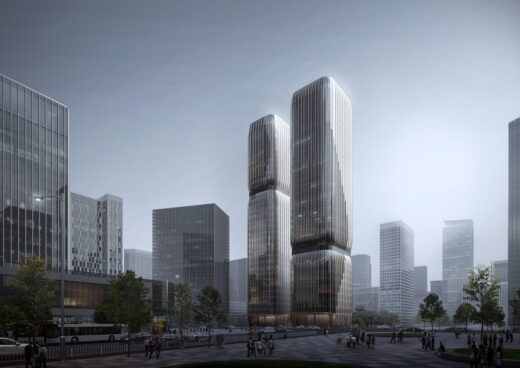
photo : Zhang Xi
Qianjiang Century City A-07 Plot, Hangzhou
Xitou Greentown · Cloud Land Business Center, Hangzhou, Zhejiang Province, East China
Design: WJ STUDIO
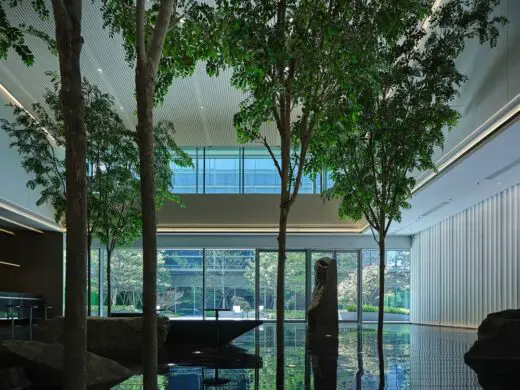
photograph : Zhang Xi
Cloud Land Business Center, Hangzhou
Huaxia Center
Architecture: PH Alpha Design
Hangzhou Huaxia Center
Yinno Unico
Design: MMC DESIGN
Yinno Unico Boutique Store
Architecture in China
Contemporary Architecture in China
China Architecture Designs – chronological list
Chinese Architect Studios – Design Office Listings on e-architect
Shanghai Shipyard Masterplan, Lujiazui District, Shanghai, People’s Republic of China
Architecture: Farrells
Shanghai Shipyard Masterplan
Comments / photos for the Cainiao Headquarters and Industry Park in Hangzhou, China designed by Archi-Tectonics NYC, LLC page welcome.

